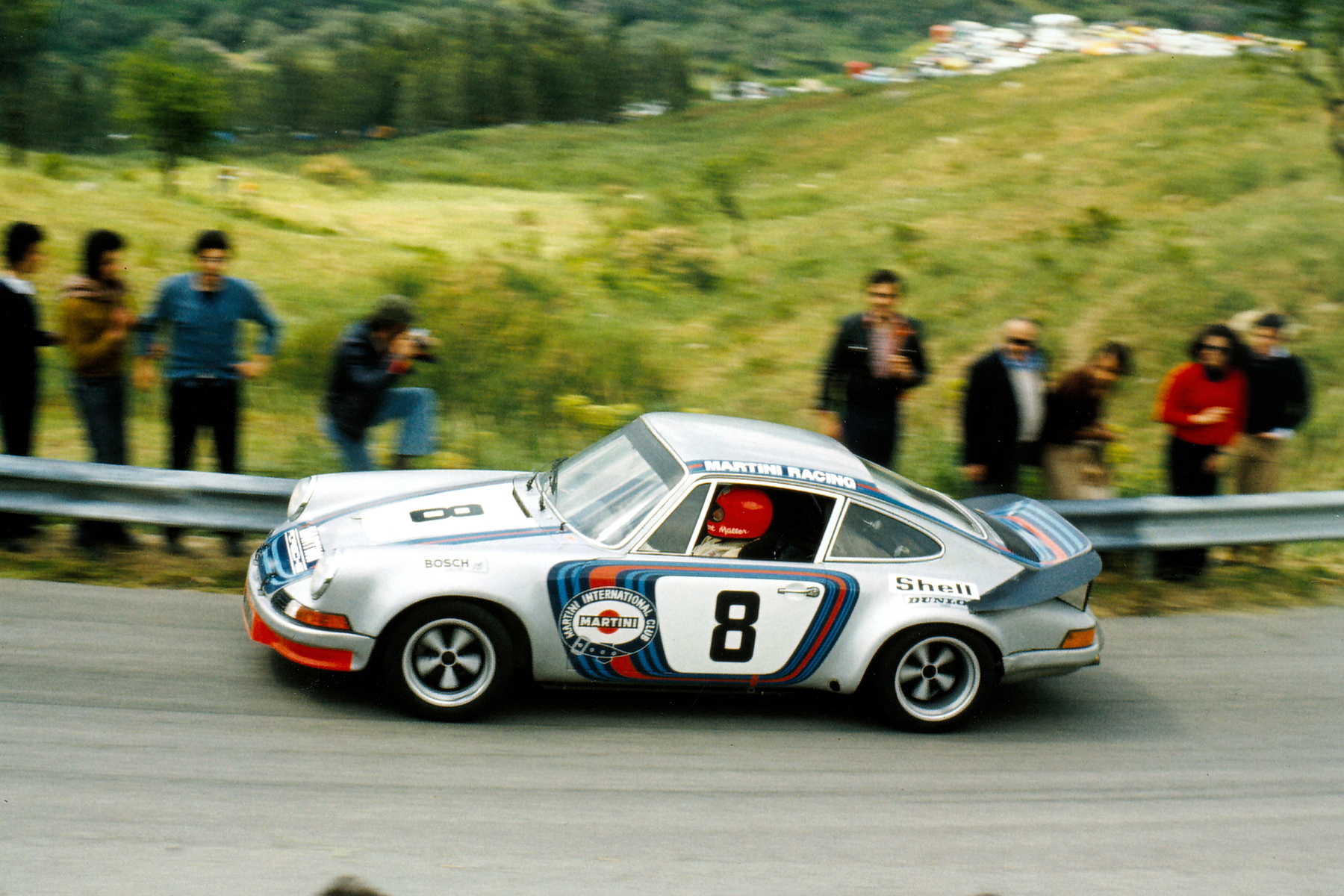RSR: A Porsche 911 history
When Porsche released the Porsche 911 Carrera RS in 1973, they didn’t do so in the hope of creating a road car legend. Instead, it was a means of getting the 911 Carrera RSR homologated for Group 4 racing.
In 1973, the 2.8-litre Porsche 911 Carrera RSR would start the season in victorious fashion, a Brumos-entered car winning the 24 Hours of Daytona in February with Peter Gregg and Hurley Haywood at the wheel.
By the end of May, the factory Martini Racing squad had added a famous triumph at the Targa Florio to the trophy cabinet before the ’73 RSR was modified with a 3.0-litre engine for that year’s 24 Hours of Le Mans.
This engine would go on to power the 1974 Porsche 911 Carrera RSR, a car that dominated Group 4 racing for the next 24 months in the hands of various independent outfits such as Gelo Racing and Kremer Racing, while a 2.8/3.0 RSR hybrid competed in the US IROC series during the 1973/74 winter.
1974 would also bring about the Porsche 911 Carrera Turbo RSR 2.1, a prototype racing machine that managed to finish second overall in the 24 Hours of Le Mans, proving the forced induction concept to the Stuttgart board.
For 1976, Zuffenhausen was solely focussed on turbocharging, launching the 934 and 935 version of the Porsche 930. Initially, the former was known as the Porsche 911 Turbo RSR, especially in the USA, but before long, ‘934’ became the standard nomenclature.
Throughout the Eighties, the GT classes disappeared from Le Mans but, for their return in 1993, Porsche readied the 964 Carrera RSR, complete with 3.8-litre flat six and extravagant wings and spoilers.
In the hands of Joël Gouhier, Dominique Dupuy and Jürgen Barth (the new RSR being the latter’s brainchild), a Larbre Compétition 964 Carrera RSR took GT victory at Le Mans, with further wins at the 24 Hours of Spa and the 1000km of Suzuka.
From 1995, the RSR denomination once again disappeared from the tracks as Porsche focussed its efforts on the GT1 and GT2 versions of its recently released 993 platform but, with the switch to water-cooling for the 996 came the return of the fabled motorsport badge.
After launching the 996 GT3 R and GT3 RS versions in 1999 and 2001 respectively before a 996 GT3 RSR was released in 2004, with White Lightning Racing using one to win the GT class at the 24 Hours of Le Mans, this time driven by Sascha Maassen, Jörg Bergmeister and Patrick Long.
2006 brought about the Porsche 997 GT3 RSR that has, with various updates over the years, won countless races in the FIA’s GT2 class as well as taking the 2009 FIA GT Championship title in the hands of Richard Westbrook.
Like previous generations of RSR, the GT3 RSR was the preserve of Porsche’s independent teams. However, that all changed with the release of the 991 generation car in 2013.
Rebadged simply as a 911 RSR, the factory Porsche Team Manthey, took victory in that year’s 24 Hours of Le Mans before Porsche North America Racing won last season’s 24 Hours of Daytona.
Porsche’s factory US outfit backed that up with victory at the 12 Hours of Sebring before Team Falken, one of only a few independent teams allowed to run a 991 RSR, won last season’s Petit Le Mans in their teal-and-blue customer car.
For more historical online features, check out our full selection of ‘Porsche 911 history’ articles now.






Comments (0)